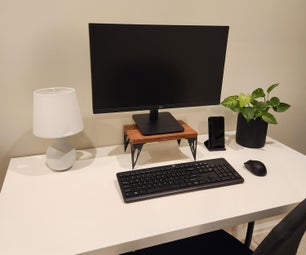Introduction: Polariscope
This is a quick 'n dirty way of building a cheap polariscope.
I got the idea when I pondered what to do with a bunch of cheap 3D cinema glasses I have.
Some background information:
http://en.wikipedia.org/wiki/Polarizer
One might think that these glasses are not suitable for this kind of use as they are circular polarized, but there's a trick for this. The quarter wave plate has to be on the correct side, otherwise you will only get linear polarization.
You should definitely play around with some of these before you mount them, there's a bunch of strange effects to discover.
Step 1: Stuff You Need
Basically, you need some sort of holder for the filters, for this I used some corrugated fiberboard.
A transparen tape looks best IMHO but you can use any old kind as long as it doesn't come off by itself.
I used a scalpel, a x-acto or any kind of sharp knife should do just fine.
For the light diffusor you can use plain writing paper.
Step 2: Designing and Cutting
My filters were almost 6cm across, so i settled for a 8x8cm part where the filter sits.
The piece between these is up to you, I used 10cm but it depends on the size of the objects you want to look at.
Very important to have the filters rotated 90 degrees from eachother, or make the holes circular so it doesn't matter when you rotate them.
Step 3: Final Assembly
First tape one of the filters securely in place. Then with a small strip of tape on the second one you can fine tune the angle so it becomes as dark as possible when you look through them both. Tape the second one down when you are satisfied, verify that it hasn't moved around.
Then one end gets a piece of writing paper, its function is a light diffusor so you get a smoother image.
Step 4: Operation and Results
To operate it you will need some source of white light, such as the sun, a led flashlight or incandescent bulb.
The light should shine evenly on the light diffusor and not too bright, but certainly brighter than the surrounding light.
Place the object to be inspected inside the box, between the filters, and look in to the box through the filter.
All sorts of transparent objects can have interesting patterns, you never know until you had a look with your newly built polariscope (:









